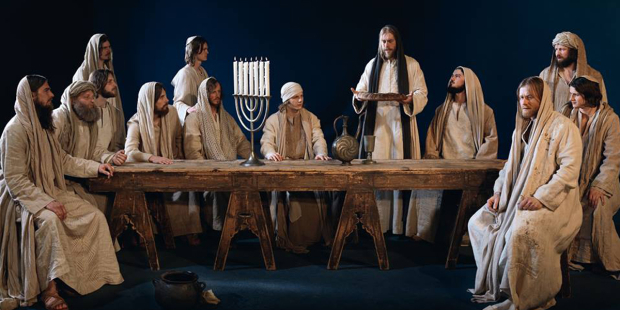In 1633, the residents of Oberammergau, Bavaria, Germany, vowed that if God spared them from the bubonic plague ravaging the region, they would produce a play thereafter for all time every 10 years depicting the life and death of Jesus. Bavaria just happens to be where Pope Emeritus Benedict XVI is from!
Oberammergau Passion Playis is a passion play performed since 16341 as a tradition by the inhabitants of the village of Oberammergau, Bavaria, Germany. It was written by Othmar Weis, J A Daisenberger, Otto Huber, Christian Stuckl, Rochus Dedler, Eugen Papst, Marcus Zwink, Ingrid H Shafer, and the inhabitants of Oberammergau, with music by Dedler. Since its first production it has been performed on open-air stages in the village. The text of the play is a composite of four distinct manuscripts dating from the 15th and 16th centuries.
The play is a staging of Jesus' passion, covering the short final period of his life from his visit to Jerusalem and leading to his execution by crucifixion.
In 1633, the residents of Oberammergau, Bavaria, Germany, vowed that if God spared them from the bubonic plague ravaging the region, they would produce a play thereafter for all time every 10 years depicting the life and death of Jesus. The death rate among adults had risen from one person per 1000 per year in October 1632 to twenty in the month of March 1633. After their vow, the adult death rate slowly subsided to one in the month of July 1633. The villagers believed they had been spared and thus kept their part of the vow when the play was first performed in 1634.
The play is now performed repeatedly over the course of five months during every year ending in zero. 102 performances took place from 15 May until 3 October 2010 and is next scheduled for 2020. (The 2020 play is being postponed to 2022 due to the outbreak of COVID-19.) The production involves over 2,000 performers, musicians and stage technicians, all residents of the village. The play comprises spoken dramatic text, musical and choral accompaniment and tableaux vivants, which are scenes from the Old Testament depicted for the audience by motionless actors accompanied by verbal description. These scenes are the basis for the typology, the interrelationship between the Old and New Testaments, of the play. They include a scene of King Ahasuerus rejecting Vashti in favor of Esther, the brothers selling Joseph into slavery in Egypt, and Moses raising up the nehushtan (bronze serpent) in the wilderness. Each scene precedes that section of the play that is considered to be prefigured by the scene. The three tableaux mentioned are presented to the audience as prefiguring Christianity superseding Judaism, Judas selling information on the location of Jesus, and the crucifixion of Jesus.
The evolution of the Passion Play was about the same as that of the Easter Play, originating in the ritual of the Latin Church, which prescribes, among other things, that the Gospel on Good Friday should be sung in parts divided among various persons.

